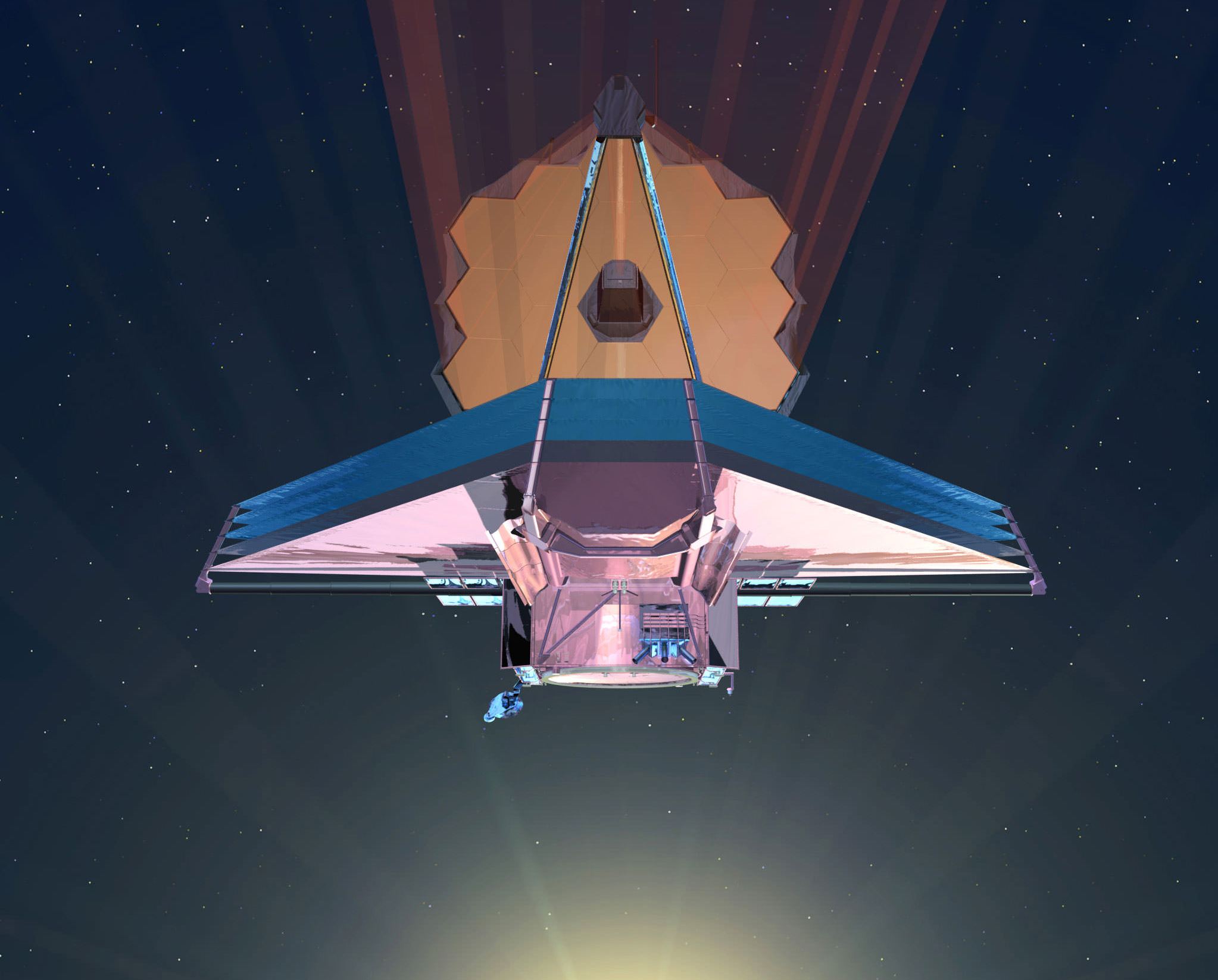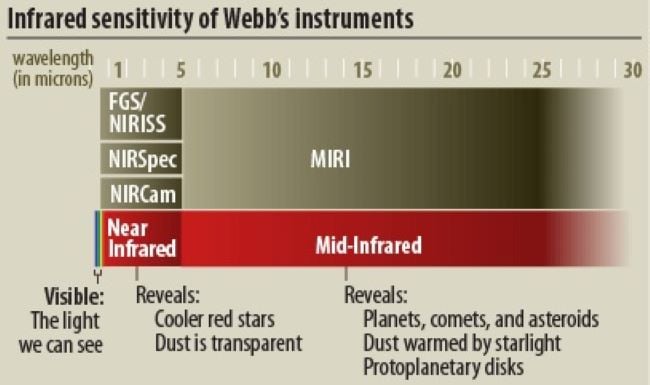MIRI is using a closed-cycle gaseous-helium cryocooler to keep its temperature down below 7 kelvin (-447 degrees Fahrenheit, -266 degrees Celsius). However, the telescope's mirrors and other instruments are being cooled down passively, without any equipment to aid in the process. Their temperature is lowered as heat is radiated out into space.
The secondary mirror, which is held out at the end of its support structure, is ready to go. Being far away from any of the heat sources of the telescope's instruments, it is currently at 29.4 kelvins. The 18 primary mirror segments are almost cooled down enough to begin observations. Currently their temperatures range from 34.4 to 54.5 kelvins. The team operating the telescope would like to see them cool down another 0.5 to 2 kelvins.
Why is all of this cooling down necessary? JWST will be seeing the infrared part of the electromagnetic spectrum. Infrared light produces heat and if the heat from the telescope's instruments is not kept below a certain temperature it will interfere with its ability to collect infrared light from the objects it will be attempting to observe.
The James Webb Space Telescope will be observing in the near- and mid-infrared part of the electromagnetic spectrum. Visible light's wavelengths tend to bounce off of dust particles, preventing the light from reaching a telescope here on Earth or even a space based observatory. Infrared light has a longer wavelength and is able to get past many more obstacles than visible light, allowing us to capture images that would otherwise not be possible.
Brown dwarfs and protostars are among the objects that JWST will be able to image, along with objects from the early universe such as black holes and some of the first stars to form. The light from those objects in the early universe has redshifted, or stretched out into the infrared part of the spectrum, and the James Webb Space Telescope will allow us to detect them, giving us a better view of this time period and hopefully answering many lingering questions about how our universe works.
More:
- NASA James Webb Space Telescope (source): Is Webb At Its Final Temperature?
- NASA James Webb Space Telescope: About Webb Orbit
- Webbtelescope.org: Beyond Visible Light
Header: NASA's James Webb Space Telescope, shown in this artist's conception, will provide more information about previously detected exoplanets. Beyond 2020, many more next-generation space telescopes are expected to build on what it discovers. Credit: NASA
 Universe Today
Universe Today

